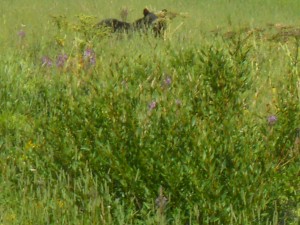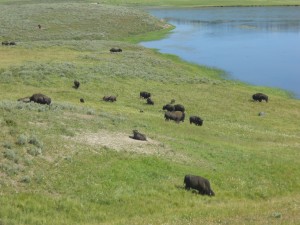
A grizzly bear gazes through vegetation in Yellowstone National Park. Photo courtesy of Madeline Hirshan.
Climate change is a phenomenon that has been a long time in the making. The last ice age ended about 7,000 years ago. This spawned the beginning of the era of human civilization. In the past, changes in climate mostly occurred from variations in Earth’s orbit affecting how much solar energy reached Earth’s surface. More recent trends lean towards rapid changes in climate due to human induced warming. According to BBC News, the likely source of climate change occurred during the 18th century with the onset of the Industrial Revolution. Centuries of human population growth and discovery have led us to this troubling point. Investigations of “greenhouse gases” had begun as early as 1824 and research regarding their properties took place around 1861. The current state of the Earth’s climate can be attributed to numerous causes including the burning of fossil fuels which trap heat in the atmosphere and re-emit it back to the surface.
Although there are many ways in which humans have left a negative carbon footprint on this planet, many important decisions had been made in the past that have preserved the environment in some fashion. National parks were created to protect key areas from extreme human intervention. Yellowstone National Park was formed in 1872 and was placed under the control of the Secretary of the Interior. The Yellowstone Act states: “He [Secretary of the Interior] shall provide against the wanton destruction of the fish and game found within said park, and against the capture or destruction for the purposes of merchandise or profit.” The numbers of national parks have increased and continue to preserve diverse and immaculate landscapes and wildlife in addition to unique cultural and historical sites. The National Parks System of the United States currently has more than 400 locations represented in forty-nine states.


